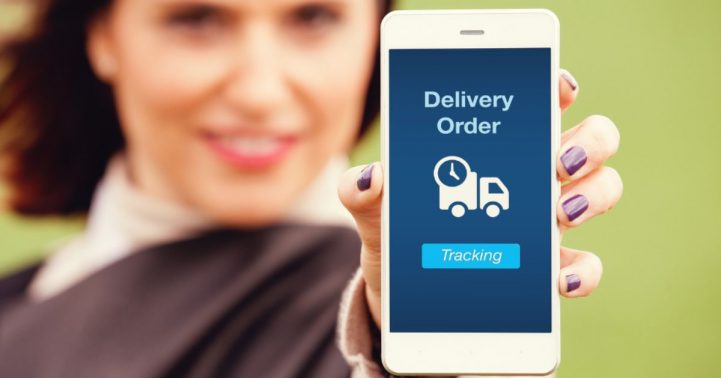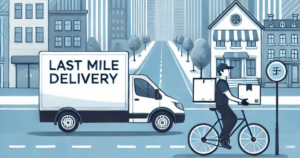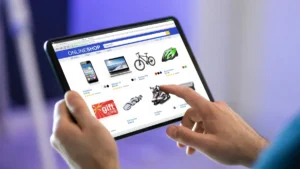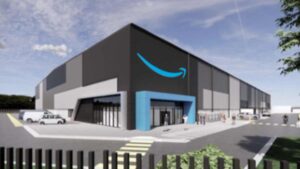Real-time tracking is vital if you want your delivery or logistics to stay ahead of the game and be on speed dial for regular repeat business.
Picture this: You’re a restaurant owner. It’s a busy Friday night, and orders are flying in. You’ve got your kitchen running at full speed, but your biggest concern isn’t the food—it’s the delivery.
Customers are growing impatient, calling to ask, “Where’s my order?” But instead of frantically calling drivers or guessing, you glance at your delivery management software and see exactly where every driver is. You reassure your customers with accurate, real time updates. Crisis averted.
This is the power of real time tracking. But what is it exactly? How does it work? And how can it transform your logistics or delivery business? Many real time tracking apps are available on the Google Play Store, making it easy for businesses to implement this technology.
In this article, we’ll dive deep into the world of real time tracking, dissecting how it operates, its benefits, and why it’s become a necessity for logistics, restaurants, and delivery services.
We’ll also explore the role of delivery management software and how real time tracking can optimize routes, elevate customer satisfaction, and transform your business.
What is real time tracking?
Real time tracking is a technology that allows businesses to monitor the location of their goods, vehicles, or deliveries as they move through the supply chain.
By leveraging GPS technology, telematics systems, and cloud-based software, real time tracking provides live data about the exact position of your assets at any given moment.
Many tracking apps are designed to work seamlessly on Android devices, making it easier to monitor and share locations effectively.
But real time tracking doesn’t just stop at location information—it can also track speed, route deviations, estimated delivery times, and more.
How does real time location tracking work?
Picture this: You’re managing a fleet of delivery vehicles. Each vehicle is equipped with a GPS device that transmits data, such as location, speed, and direction, to a central cloud-based platform.
This platform compiles the data and provides you with a comprehensive view of where each vehicle is on a map, updating in real time.
This technology works through a combination of GPS satellites, which provide the location data, and cellular networks or satellite communications that transmit this data back to your system. Once received, the data is processed and displayed on your dashboard, providing an accurate, real time snapshot of your fleet’s activity.
But it doesn’t end there. Real time tracking systems can also integrate with other software, such as delivery management platforms or Transport Management Systems (TMS), to provide advanced features like route optimization, automated dispatching, and even customer notifications.
Why is real time tracking important for business owners?
As a business owner in logistics or the restaurant industry, time is money.
Inefficient routes, delayed deliveries, and poor communication can erode your profits and damage your reputation. Real time tracking changes the game by enabling you to:
Reduce delivery times
See where your drivers are and provide them with real time route adjustments to avoid traffic or other delays.
Improve customer satisfaction
Give your customers peace of mind with accurate delivery times and real time notifications. Real time tracking apps allow users to share their location with family members, ensuring their loved ones are informed and safe.
Enhance fleet management
Track the performance of your drivers and vehicles, ensuring they’re operating efficiently.
Minimize fuel costs
Optimize routes to save on fuel and reduce unnecessary mileage.
Improve decision making
Access critical data to make informed decisions that improve operational efficiency.
The role of delivery management software in real time tracking
Delivery management software (DMS) is the backbone of real time tracking, providing a centralized platform to manage and optimize your delivery operations. Here’s how it enhances real time tracking:
- Providing real time updates: DMS offers real time updates on the location of vehicles and drivers, allowing you to make quick adjustments and improve delivery times.
- Optimizing delivery routes: By analyzing real time data, DMS can optimize delivery routes, reducing the number of vehicles on the road and cutting down on fuel costs.
- Providing customer updates: DMS keeps customers informed with real time updates on their deliveries, enhancing their experience and reducing the need for customer service inquiries.
- Improving supply chain management: DMS tracks the location of inventory and supplies in real time, helping you to streamline your supply chain and ensure timely deliveries.
By integrating delivery management software with real time tracking, businesses can achieve greater efficiency, lower costs, and higher customer satisfaction.

How real time tracking can help the restaurant business
Picture this: You run a popular chain of pizza restaurants in a bustling city. Fridays are your peak nights, and every minute counts.
Before adopting real time tracking, your delivery drivers would frequently get stuck in traffic, take inefficient routes, or even get lost. Customers would call in, frustrated with cold food and inaccurate delivery estimates.
Now, with real time tracking integrated into your delivery management software, things are different. You can monitor each driver’s location and progress.
As soon as an order is ready, the system suggests the best driver for the job based on their proximity and current status. If there’s an unexpected traffic jam, you’re alerted and can redirect the driver to a faster route.
Meanwhile, your customers receive live updates on their order status. Instead of calling your restaurant, they can track their delivery on their smartphones, just like they would track a package.
And if they do call in, your staff has all the information they need to give precise updates, reducing stress and boosting customer satisfaction.
Australian logistics expert and founder of Zoom2u Technologies (ASX:Z2U) Steve Orenstein gives some insight into customer service:
“Great customer experience attracts great reviews, and that experience is not only about the product they bought from you, but also how it was delivered.”
What is real time order tracking?
Real time order tracking is a customer-facing feature that lets your customers know exactly where their order is and when it will arrive.
This is not just about providing an estimated delivery time—real time order tracking shows the order’s journey in real time.
For example, a customer places an order for a meal through your restaurant’s app. With real time order tracking, they can see when their food is being prepared, when it’s out for delivery, and when it’s arriving at their doorstep.
This transparency builds trust and keeps customers engaged, as they feel more in control of their experience.
Real time order tracking isn’t limited to restaurants. Retailers, courier companies, and even healthcare providers use it to provide a more transparent and predictable service for their customers.
How route optimization and real time tracking work together
Route optimization and real time tracking are a powerful combination. While real time tracking gives you visibility into your fleet’s current status, route optimization uses algorithms to find the most efficient routes for your drivers, taking into account factors like traffic, road conditions, and delivery windows.
How It works:
Phase 1 – Initial route planning: When a new delivery is scheduled, the system uses historical data and real time information to plan the best route.
Phase 2 – Real time adjustments: As the driver progresses, real time tracking data feeds back into the system. If an unexpected delay occurs (e.g., an accident or road closure), the route optimization tool recalculates and suggests an alternative route.
Phase 3 – driver guidance: The updated route is communicated to the driver through their in-vehicle device or smartphone, minimizing delays and ensuring timely delivery.
By using real time tracking and route optimization together, you can ensure that your fleet is always on the most efficient route, cutting down on delivery times and improving overall efficiency.
How real time tracking saves money for logistics companies
Real time tracking is more than just a way to locate vehicles—it’s a comprehensive tool that drives operational efficiency and reduces costs.
For logistics companies, real time tracking translates into direct savings across multiple facets of the business. Here’s how:
Reduction in fuel costs and optimized routes
One of the biggest savings logistics companies see with real time tracking is reduced fuel consumption. By using real time data, route optimization software can plan the most efficient routes based on traffic, road conditions, and other factors.
This ensures that vehicles take the shortest possible routes, reducing unnecessary mileage and fuel usage.
For example, Circuit for Teams, a popular route optimization tool, helps companies reduce time on the road by providing dynamic route adjustments. This not only lowers fuel costs but also cuts down on vehicle wear and tear, extending the lifespan of fleet assets.
Minimized delays and reduced delivery times
Real time tracking allows logistics companies to respond swiftly to unexpected delays. If a truck gets stuck in traffic or encounters road closures, managers can reroute drivers in real time.
This ability to respond immediately prevents delays that could lead to higher costs due to missed delivery windows or penalties.
A real-world scenario involves identifying congested areas in advance and avoiding them, thus maintaining on-time performance and preventing costly rerouting fees.
Improved asset utilization and reduced idle time
Logistics companies often suffer losses due to unproductive idle times and inefficient asset use. Real time tracking provides a solution by monitoring how vehicles are used, including the time spent idling and total distance covered.
Companies can identify patterns of inefficiency and adjust schedules or routes accordingly, ensuring that every vehicle in the fleet is operating at maximum productivity.
This leads to better utilization of assets and reduces the need for additional vehicles, which translates into lower operating costs.
Enhanced fleet maintenance
Real time tracking systems often include features that monitor vehicle health and performance. This helps companies plan maintenance based on actual vehicle usage rather than arbitrary time intervals.
Preventative maintenance reduces the risk of costly breakdowns, unscheduled repairs, and prolonged vehicle downtime.
A company can save significant amounts by scheduling maintenance only when necessary, avoiding both under- and over-maintenance.
Lower insurance costs
Companies using real time tracking can often benefit from reduced insurance premiums.
With real time visibility into fleet movements and reduced risk of accidents or theft, insurance companies see these businesses as lower risk, leading to lower premiums.
Additionally, the ability to track and recover stolen goods thanks to GPS tracking further reduces potential loss, which also appeals to insurers.
Reduced theft and loss prevention
Cargo theft is a major concern in the logistics industry, leading to billions of dollars in losses each year.
Real time tracking enhances security by providing constant updates on the location and status of shipments.
This minimizes the risk of stolen goods and lowers costs associated with replacing lost products and dealing with insurance claims.
Increased customer retention and reduced customer service costs
Real time tracking improves customer satisfaction by providing accurate delivery windows and proactive notifications about the delivery status. This not only reduces the number of calls and complaints to customer service but also enhances trust and brand loyalty.
Here’s a scenario: Let’s consider a logistics company specializing in delivering temperature-sensitive goods like pharmaceuticals and perishable food items.
Before implementing real time tracking, the company faced numerous challenges, including delayed deliveries, high fuel costs due to inefficient routing, and frequent issues with product quality during transit.
After integrating real time tracking with their delivery management software, the company noticed immediate improvements:
- Fuel costs dropped: With optimized routes, their fleet avoided congested areas and minimized the time spent idling, leading to significant fuel savings.
- Product quality improved: By monitoring the location and conditions of goods during transit (such as temperature and humidity), the company reduced the number of products spoiled or damaged in transit.
- Fewer customer complaints: Real time updates on delivery status kept customers informed, leading to a reduction in calls to customer support.
These savings, compounded over a year, resulted in tens of thousands of dollars in reduced operational costs and higher customer satisfaction, making the investment in real time tracking technology more than worthwhile.

How does real time tracking enhance last-mile delivery?
Last-mile delivery is one of the most challenging aspects of logistics. It’s the final leg of the journey—the point where goods reach the end customer.
But it’s also the most complex and expensive part of the process.
- Real time adjustments: If a driver is running late or takes a wrong turn, you can intervene immediately.
- Accurate ETAs: Provide customers with precise delivery times, reducing anxiety and improving satisfaction.
- Reduced failed deliveries: Real time tracking helps drivers avoid mistakes like delivering to the wrong address or missing customers entirely.
For restaurant owners, this means fresher food and happier customers. For logistics companies, it means fewer missed deliveries and a more reliable service. Real time tracking can be the difference between a successful delivery and a frustrated customer.
Locate2u has real time tracking software that can help your restaurant deliver on time.
Let’s Wrap Up
- Real time tracking provides live visibility of your fleet, deliveries, or goods, enhancing operational control.
- Integrating delivery management software optimizes routes, reduces costs, and improves driver efficiency.
- Real time order tracking enhances customer experience by providing live updates and precise delivery times.
- Combining route optimization with real time tracking minimizes delays and improves overall delivery efficiency.
- For last-mile delivery, real time tracking reduces failed deliveries, improves ETAs, and boosts customer satisfaction.
- Real time tracking is a must-have technology for logistics, restaurant, and delivery service businesses aiming to stay competitive.
NOW READ: What is fleet management software?
About the author
Sharl is a qualified journalist. He has over 10 years’ experience in the media industry, including positions as an editor of a magazine and Business Editor of a daily newspaper. Sharl also has experience in logistics specifically operations, where he worked with global food aid organisations distributing food into Africa. Sharl enjoys writing business stories and human interest pieces.












